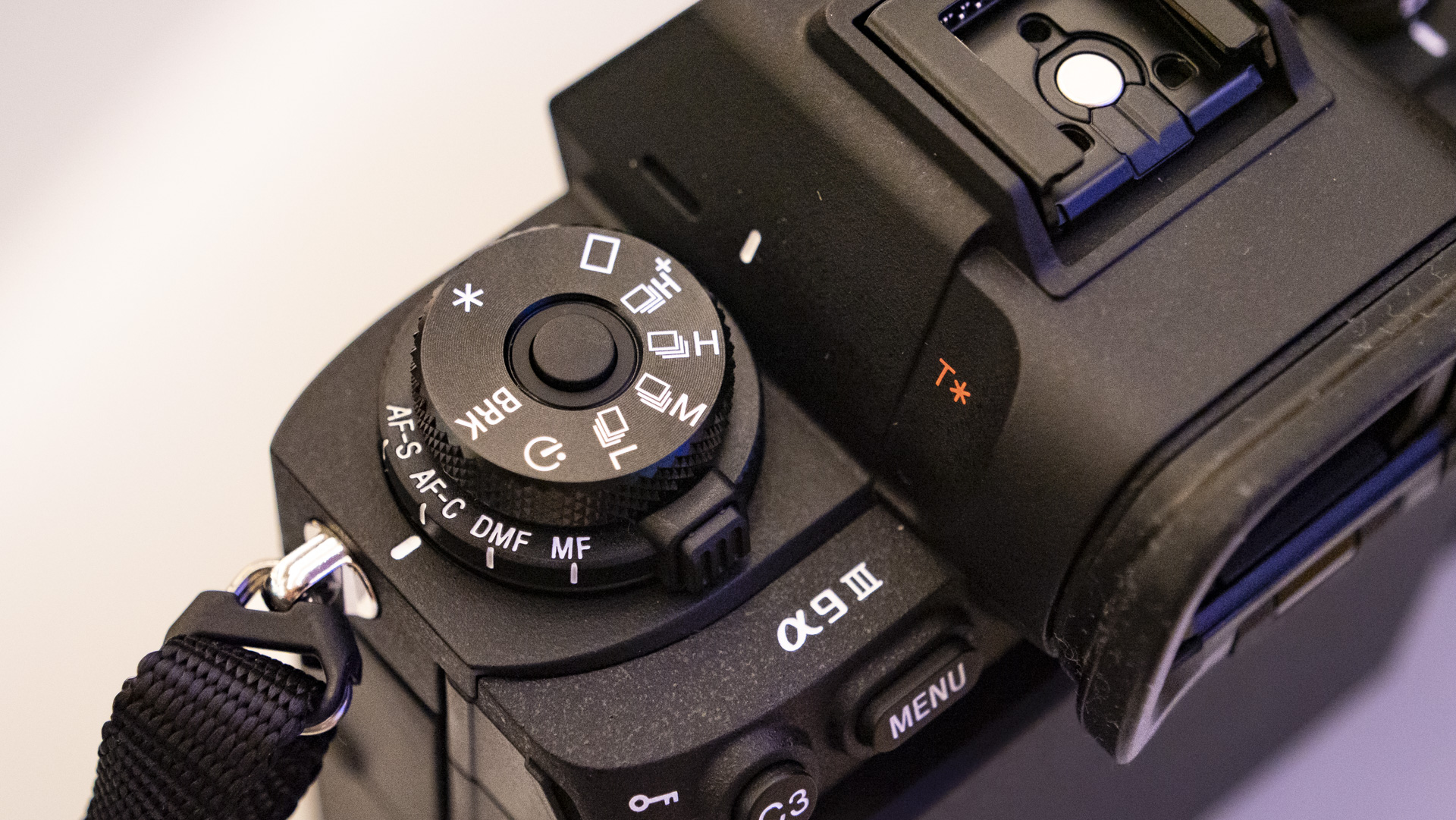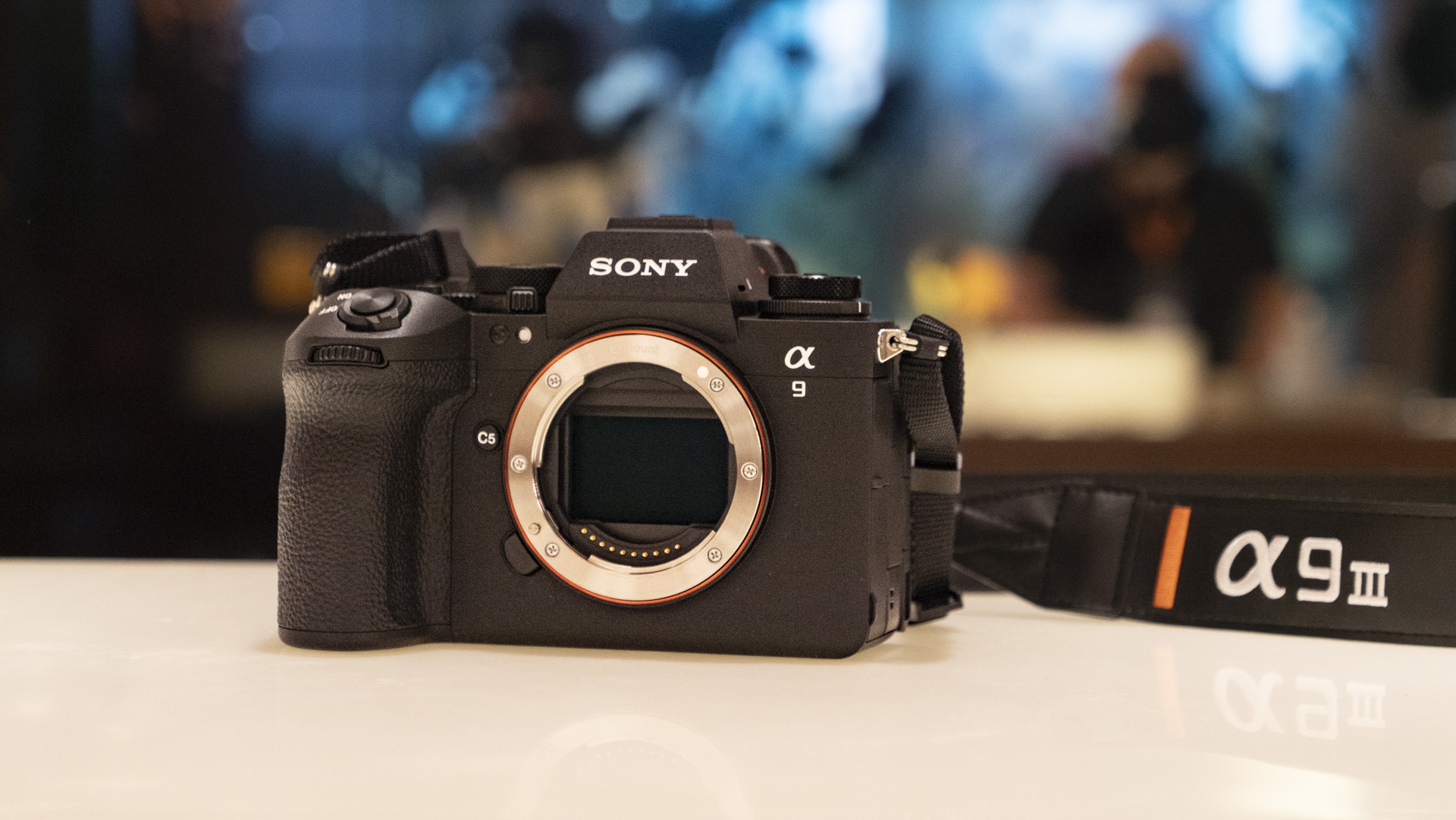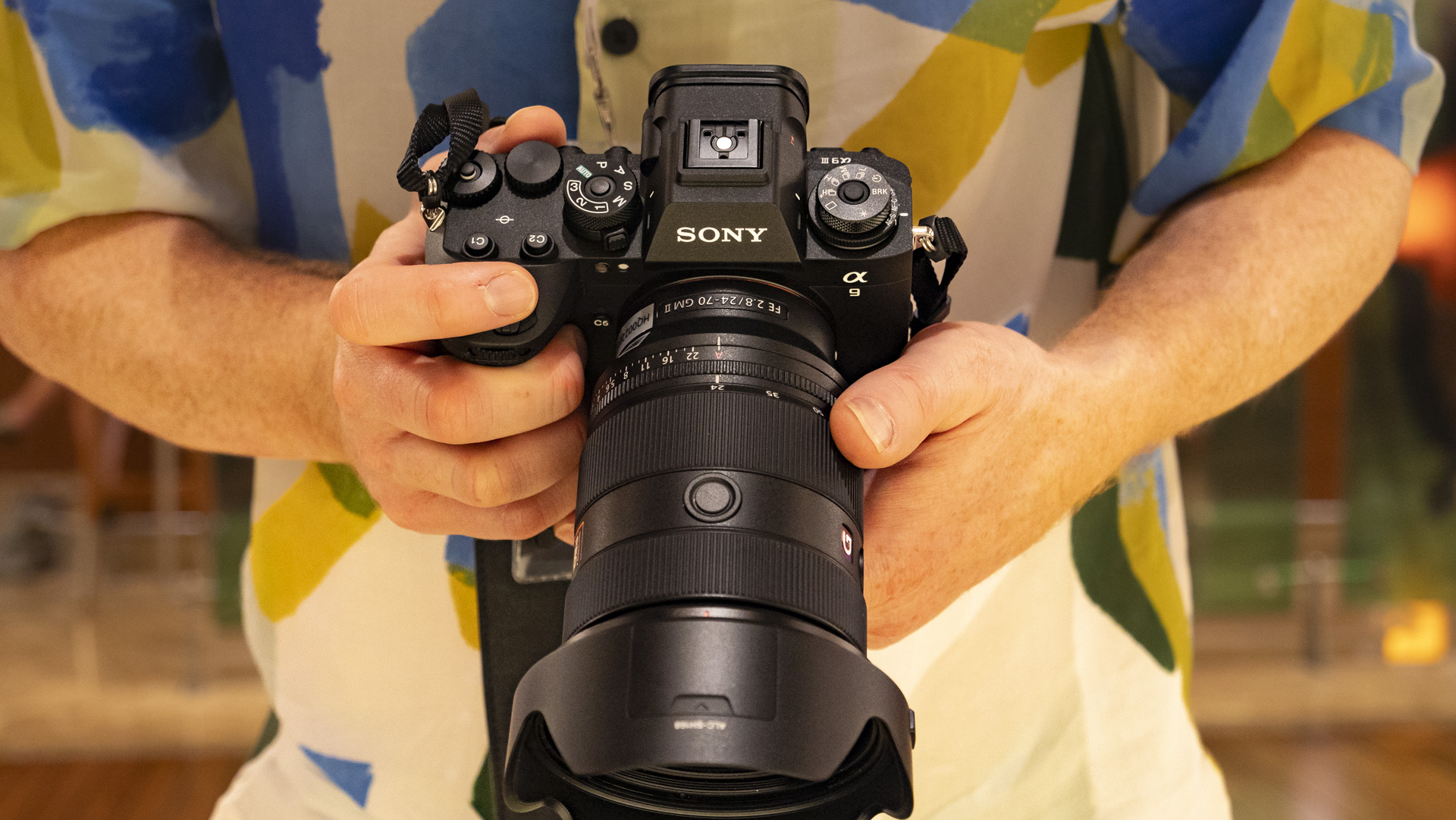Every now and then a new camera wows the world of photography, and the launch of the Sony A9 III was one of those moments. So is the buzz around the fastest-ever camera justified? I’ve only had a day with the speedy shooter so it’s too early to tell, but I’m certainly optimistic, especially given that this is Sony we’re talking about.
With the A9 III Sony has upped the bar by some margin for high-performance photography for sports and wildlife. A new kind of sensor with ‘global shutter’ unleashes a number of class-leading features, and crucially eliminates the distortion in photos and video that you can get with the electronic sensors used to enable top performance in most other cameras.
Put simply, combined technologies have realized never-before-seen performance that’s overkill for most, and exciting for those that can afford Sony’s flagship prices; 120fps burst shooting, a maximum 1/80,000 sec shutter with flash sync at any shutter speed are the headlines, and they’re yours for $6,000 / £6,100 / AU$10,500.

The A9 III is also a camera blessed with Sony’s best innovation that we’ve seen before namely in the A7R V, the camera we awarded best mirrorless camera in our TechRadar 2023 Choice Awards; the Bionz XR processor (the A9 III actually has two of them), an AI-autofocus chip for industry-leading subject tracking AF, the highest-resolution 9.44m-dot EVF, and a 4-axis vari-angle touchscreen.
Burst shooting up to 120fps comes with no compromises on the camera’s performance or image quality – that means 24.6MP raw and JPEG with continuous tracking AF and auto exposure – and is frankly over-the-top excellence. Unless Canon or Nikon conjure up a new camera of their own with never-before-seen features, the A9 III will be the envy in Paris Olympic Games 2024 press pits.
Not all sports and wildlife scenarios need such high speeds, but shooting sequences of athletic disciplines such as hurdles and long jump during a half day hands-on with Sony’s latest flagship camera on the day of its global announcement gave me a glimpse of why you might need next-level speed. There are indeed situations where pro sports photographers might come to appreciate such power – decisive moments can be lost in a fraction of a second.

It’s been a while since I’ve had a camera and simply needed to get it back to see what it’s truly made of. A half-day hands on, with no support available yet for the A9 III’s raw files, means this hands-on review comprises my first impressions only, with no observations on all-important image quality, which I’m particularly keen to assess during my in-depth review, as there’s a question mark over the impact the new sensor type might have on image quality.
For now, I’ve been blown away by what the A9 III can do, and it should be one of the best mirrorless cameras. Its spec and performance are going to be over the top for all but a few pros, but it’s been great fun to have a taste of this camera, and it’s whetted my appetite for more.
Sony A9 III: release date and price
- $6,000 / £6,100 / AU$10,499 body-only
- New vertical grip, price TBC
- Set to hit the shelves early in 2024
The Sony A9 III body-only list price is $6,000 / £6,100 / AU$10,499, which is what I’d expect for a Sony camera at this level, although that’s a markup from the Sony A9 II. It’s firmly in the professional sports and wildlife photography camp, and the projected on-sale date is early 2024, ahead of the Paris Olympics which begin in late July.
A newly designed grip means the A9 III requires a new optional vertical grip, launched alongside the camera, to extend the size and battery life and provide a comfortable way to shoot in vertical format. There’s no official pricing for the new grip yet, but pretty much every photographer that adds the A9 III to their shopping basket will add the grip. I can also see the A9 III being a popular camera to hire for special events and commissions.
Sony A9 III: design and handling
- Larger grip and a new optional vertical grip
- Industry-leading EVF
- Abundant control layout
As a camera that’s designed primarily for pro action photography, the A9 III has the kind of build quality to withstand tough conditions and inclement weather. It’s not a chunky affair like the Nikon Z9 though – Sony mirrorless cameras are always small, even the A9 series. Conversely, most pro prime telephoto lenses are big, so how is the balance of the A9 III? Pretty good, actually.
There’s a familiar Sony mini DSLR-style form factor, except that the grip is chunkier for a better hold. I found it a decent pairing with the FE 24-70mm F2.8 GM lens that was one of the lenses I had for the hands-on. With larger lenses, like the new FE 300mm F2.8, the A9 III really benefits from the optional vertical grip – I also got to try out that combo.
With a new design, of course the A9 III needs an all-new optional vertical grip, and I’d expect the majority of A9 III photographers to opt for one – I’d certainly pick one up. Not only does the grip add a little weight and height, it offers controls at your fingertips for vertical shooting, replicating the layout of the camera for horizontal-format photos, plus it extends battery life. With the FE 300mm F2.8 lens, which weighs 1,470g attached, there’s a really good balance between camera (with grip) and lens.
We get the same industry-leading EVF as found in the A7R V, and the 9.44m-dot unit has a 120fps refresh rate, with no blackout during continuous shooting – it really does perform flawlessly. The touchscreen is also an A7R V special; a dual-axis vari-angle screen that can be positioned at all manner of angles.
The control layout is comprehensive, too, including customizable buttons that can activate features like 120fps at a push, more control dials than you can shake a stick at, Ethernet, plus a joystick to navigate menus and AF points and the like. All the good design attributes of a Sony mirrorless camera are here in the A9 III.
Sony A9 III: features and performance
- First full-frame camera with global shutter
- Sony says it’s 8x speedier than the A9 II
- Quickest-ever flash sync speed up to 1/80,000 sec
Sony cameras are generally feature-rich, but as this is the first mirrorless camera with a global shutter, that’s where we’ll begin. It’s a pricy sensor type previously found only in high-end cine cameras, and its long been tipped for the rumored Canon EOS R1 – a potential rival to the A9 III. So what’s all the fuss about this sensor type?
To summarize: it reads every pixel simultaneously rather than line by line, as other sensor types do when using their electronic shutter (rather than the mechanical shutter). Currently, the Nikon’s Z8 and Z9’s stacked sensor with electronic shutter boasts the quickest sensor readout speed (line by line) of 1/250 sec.
You’d be hard pressed to find distortion in Z9 images, but generally there’s a risk of what’s called rolling shutter when using the electronic shutter – a ‘jello’ effect. In most DSLR and mirrorless cameras you can use a mechanical shutter instead for distortion-free photos, but the shutter’s mechanical speed is limited – the fastest ever speed is 16fps in the Canon EOS 1D X Mark III.
The global shutter is the best of both worlds: no distortion, and no real limit on burst shooting speed, up to 120fps.

That’s what’s so exciting about the A9 III for capturing high-speed action; you can move the camera quickly to track your subject in stills or video, or freeze especially fast-moving subjects like a golf swing, and you won’t see any distortion. You also get the fastest minimum shutter speed ever, up to 1/80,000 sec. It’s an action photographer’s dream.
Sony’s latest Bionz XR processor is in play here, only there are twin processors that Sony says bumps up the A9 III’s speed by 8x over the A9 II. That’s needed for such high-speed work, and for features like pre-capture up to one second. We’ve seen pre-capture in other systems from the likes of Panasonic, but it’s another first for Sony mirrorless; pre-capture can record sequences up to one second before you fully press the shutter, another handy trick for capturing decisive moments.
A global shutter also has no real limit to shutter speed when synchronizing to an external flash, save for the limit of the flash itself. That means the A9 III can in theory flash-sync at any shutter speed, where other systems are limited to somewhere between 1/160 sec and 1/250 sec. For those who are into flash photography in particular, the A9 III opens up a whole other realm of creative possibilities, cleanly freezing fast action with no motion blur.
All the above begs the question – if this sensor type is so good for action, why hasn’t it been used before? Ahead of using a final production model with the ability to process raw files, the speculation is that it has an adverse impact on image quality, namely dynamic range and noise.
I’ll run through more features and real-world performance in my in-depth review, but for now those are the highlights in what promises to be a trailblazing mirrorless camera.
Sony A9 III: image and video quality
- Same 24.6MP resolution as the A9 II
- 4K 60p video from full width of the sensor (oversampled)
- ISO 250-25,600
Sensibly, Sony has kept the A9 III’s sensor resolution to 24.6MP just like in the A9 II. That’s a perfectly acceptable resolution for the intended audience of sports and wildlife photographers, and a clear distinguisher from the A1 (and a potential successor), which has around double the pixels.
It is of course a different sensor type with global shutter, too, and that comes with a curious ISO 250-25,600 sensitivity range that can’t match that of the A9 II and A1. Those cameras have a base ISO 100 setting, and we can speculate that they have better dynamic range and handling of noise, especially for landscape photography in good light using the base ISO.
I can’t be certain about image quality until I get my hands on a full production model, and until the raw files are supported by the leading photo editors. However, we should also remember the intended A9 III user – most people won’t buy the A9 III for anything other than high-speed scenarios, using high shutter speeds to freeze the action. In this reality, you won’t be able to shoot lower than ISO 250 anyway, and so the limited ISO range is a somewhat moot point for pro sports and wildlife photography.
Can the A9 III compete with the image quality of, say, the A7R V at like-for-like ISO ratings? That’s the kind of in-depth testing that could shine the light on what wonders Sony has worked with the global shutter here, and on whether or not we can expect to see it in further flagship cameras from this point forward.
Elsewhere, 4K video up to 60fps is oversampled from 6K – that’s the full width of the 24.6MP sensor. You can also create short 6K slow-motion video clips by using the A9 III’s 120fps burst shooting mode and stitching those files together in post.
Those top frame rates are equivalent to 4x slow motion video, when played back at the standard 30fps video playback – the A9 III is so fast that you can create slow-motion video from photos, at 24.6MP which is equivalent to 6K.
Sony A9 III: early verdict

Experience tells you to see through the hype, but after a half day with the A9 III, I have a feeling the hype here is justified. Industry-leading burst shooting is one thing, but knowing there’s no risk of distortion for photos and video, and having access to a whole new world of flash photography possibilities, is even more exciting. And it’s all in a camera that has the durable build quality, decent displays and a plethora of controls at your fingertips. Lenses like the new FE 300mm F2.8 GM OSS, which was launched on the same day, form a potentially formidable pairing with the A9 III, although the jury is out for now regarding image quality. If you can afford to buy or hire the A9 III, it’s a camera that’s set for the big stage.
Sony A9 III: how I tested

I had half a day covering a variety of sports scenarios that included long jump, hurdles, high jump, gymnastics and boxing. I paired the A9 III with several lenses, including the FE 300mm F2.8 GM OSS, FE 70-200mm F2.8 GM and FE 24-70mm F2.8 GM.
During this shooting experience, I used the A9 III’s continuous high+ mode at 60fps and boosted it to 120fps, backed up by subject tracking continuous autofocus. The changeable light and speed of the action meant I used a variety of shutter speeds, ISO settings, plus I dabbled with an external flash.





